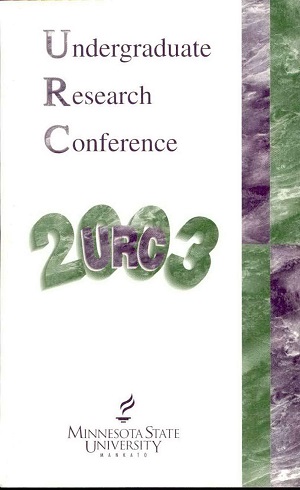Identification of Proteins Interacting with Actin Capping Protein β1 and β2
Location
CSU
Student's Major
Biological Sciences
Student's College
Science, Engineering and Technology
Mentor's Name
Marilyn Hart
Mentor's Department
Biological Sciences
Mentor's College
Science, Engineering and Technology
Description
Actin, a component of all eukaryotic cells, contributes to cell motility and shape. Actin capping protein (CP), associated with the actin cytoskeleton, is a heterodimer composed of alpha and beta subunits. The beta subunit has three isoforms: beta1 (β1), beta2 (β2), and beta3 (β3). These isoforms are produced from alternative splicing of one gene with 90% sequence identity. The region of divergence defines membership to each subfamily. Previous work in cardiac myocytes has shown that β1 cannot functionally replace β2, nor can β2 functionally replace β1. Furthermore, data suggests that the isoform specific functions are due to novel protein interactions. We are attempting to identify the proteins that interact with each isoform via a yeast two-hybrid genetic screen. This screen utilizes two specific components: a bait plasmid and a prey plasmid. We have generated a bait plasmid and confirmed its orientation. The screen is underway and preliminary results will be presented.
Identification of Proteins Interacting with Actin Capping Protein β1 and β2
CSU
Actin, a component of all eukaryotic cells, contributes to cell motility and shape. Actin capping protein (CP), associated with the actin cytoskeleton, is a heterodimer composed of alpha and beta subunits. The beta subunit has three isoforms: beta1 (β1), beta2 (β2), and beta3 (β3). These isoforms are produced from alternative splicing of one gene with 90% sequence identity. The region of divergence defines membership to each subfamily. Previous work in cardiac myocytes has shown that β1 cannot functionally replace β2, nor can β2 functionally replace β1. Furthermore, data suggests that the isoform specific functions are due to novel protein interactions. We are attempting to identify the proteins that interact with each isoform via a yeast two-hybrid genetic screen. This screen utilizes two specific components: a bait plasmid and a prey plasmid. We have generated a bait plasmid and confirmed its orientation. The screen is underway and preliminary results will be presented.



